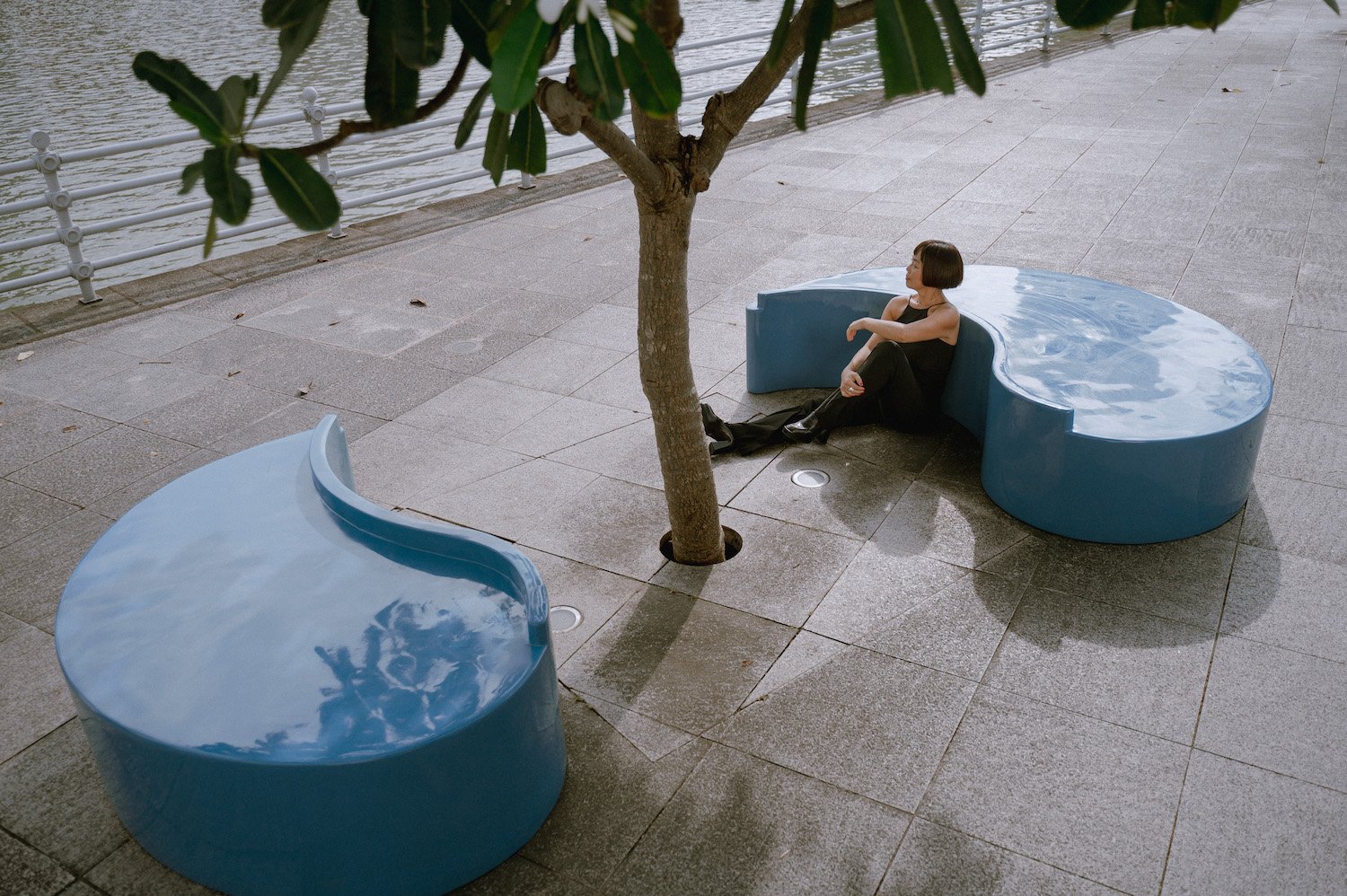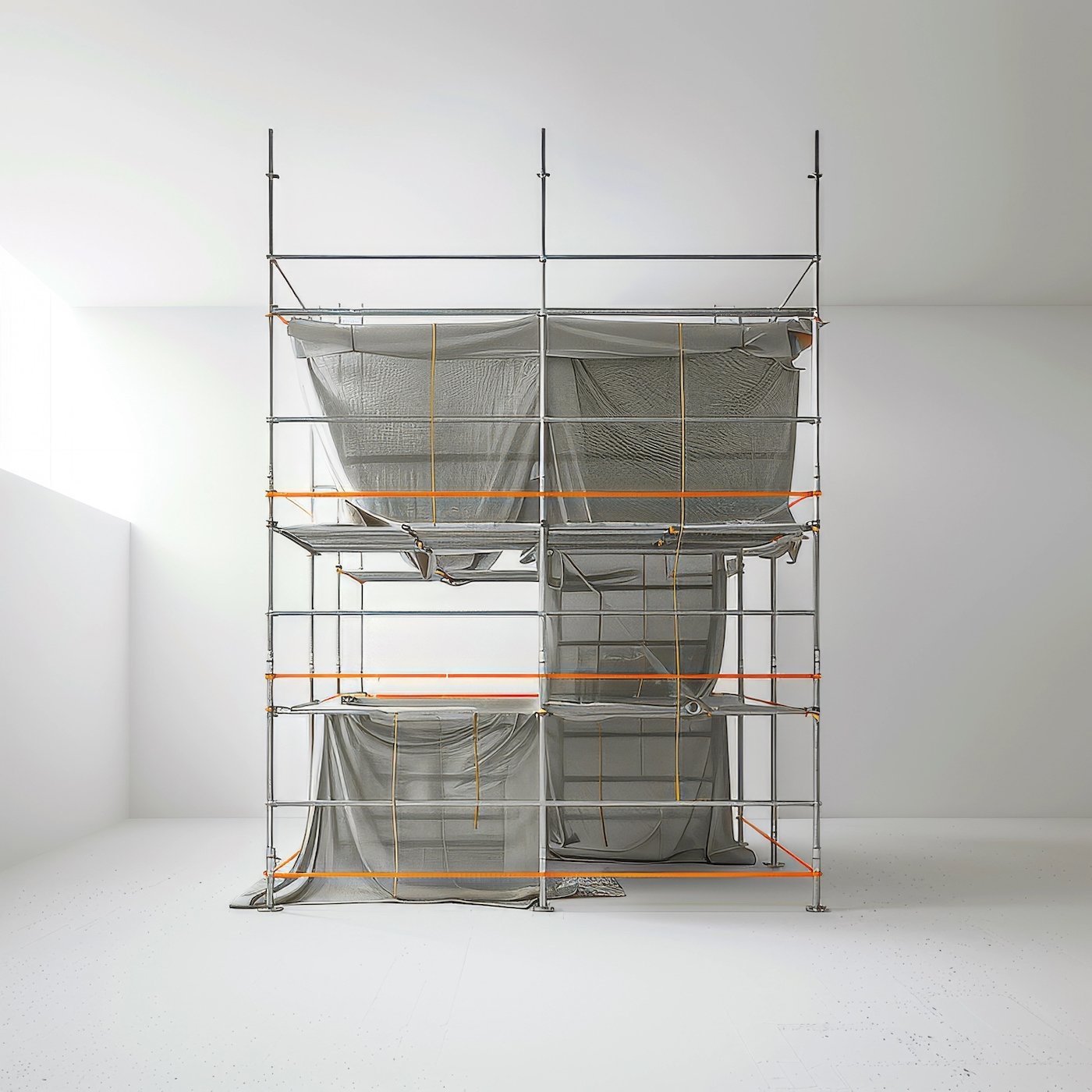Benchmarks: The First Public Art Trail in Singapore’s Civic District
Punctuation marks as a visual metaphor
By Alicia Ng
‘Benchmarks’. Image courtesy of Arts House Limited.
Walk around the Civic District and you may spot an eclectic collection of benches. There is ‘This is Not A Bench’ (2023), the brightly-coloured abstract structures outside The Arts House; ‘A Micropolyphonic Stage’ (2023), a pair of blue comma and apostrophe-shaped seats along the Singapore River; and ‘...all the King’s men’ (2023), made of weathered granite, steel and composite wood.
United by the theme of punctuation marks as a visual metaphor, these benches are part of a six-stop art trail titled ‘Benchmarks’, the first public art initiative within the Civic District. It features the work of six Singapore-based artists: Immanuel Koh, Jason Wee, Jeffrey Tan, Joyce Beetuan Koh, Lua Boon Kai and Yang Jie. Each bench serves as a place to pause, allowing visitors to appreciate the rich historical and cultural significance of their surroundings.
According to Justin Loke, curator of ‘Benchmarks’, the artists were chosen because of their diverse practices and experience with interdisciplinary projects. For example, Joyce Beetuan Koh is a music composer and sound artist, and Jeffrey Tan is a Theatre Director and Drama Educator. The artists were tasked to deliver functional artworks that push the conventions of a public bench. “For me, design is function morphed into form,” Loke elucidates. “An art bench is the reverse: form morphed into function; this reversal expands the definition of a bench.”
Lua Boon Kai, ‘This is Not a Bench’, 2023, fibreglass. Image courtesy of Arts House Limited.
The first stop along ‘Benchmarks’ is Lua Boon Kai’s ‘This is Not a Bench’ (2023), an abstract design consisting of two organic structures in contrasting colours of teal and red. Situated in front of The Arts House Annex building, the artwork is shaped like a question mark and redefines preconceived notions around the form and function of a singular bench. It invites visitors to explore playful ways of interaction, be it slouching, hugging or leaning. By injecting an element of fun, Lua transforms the bench into a space for others to connect and find a sense of community.
Joyce Beetuan Koh. ‘A Micropolyphonic Stage’, 2023, fibreglass. Image courtesy of Arts House Limited.
Further along the river, audiences will find 'A Micropolyphonic Stage' (2023) by Joyce Beetuan Koh, a pair of blue benches shaped like an inverted apostrophe and a comma. Koh was inspired by her background in music and surrounding performing arts venues such as Victoria Theatre and TheatreWorks. “Putting together the various elements of lines, curves, volumes, depth, texture, tone colour, and configuration is like composing an orchestral work,” she reveals. “I think about counterpoint and harmony, hence the idea of polyphony (many voices) and micro-motives.” Intimate and serene, the bench becomes a place for mindful contemplation.
Immanuel Koh, ‘Re-Store / Neural Artefact Black’, 2023, upcycled wood. Image courtesy of Arts House Limited.
Immanuel Koh’s ‘Re-Store / Neural Artefact Black’ (2023) stands out due to its unusual silhouette. The slash in its title leads one to contemplate its many associations: a substitute for the conjunction “or”, or its prevalence in internet culture. The latter may be a more convincing assumption, given how influential technology was to Koh’s creative process. Melding past and present ideas, he trained Artificial Intelligence (AI) with imagery of furniture and sampans from Singapore’s National Collection. He then collaborated with artisans, who handmade and assembled his AI model with upcycled wood. “An architect punctuates the experience of a building by thresholding in physical space, while a computer scientist punctuates the training of an artificial intelligence (AI) model by checkpointing in computation time," Koh explains. “As an artist working at the intersection of architecture and AI, it is clear that my AI-generated urban artefact could likewise serve as a mark of punctuation between the Singapore River and the Asian Civilisation Museum in space-time.”
Yang Jie, ‘...all the King’s men’, 2023, granite, steel and composite wood. Image courtesy of Arts House Limited.
‘...all the King’s men’ (2023) by Yang Jie pays tribute to the Singapore Stone, which might have been originally located at the bench’s current location: at the base of the Anderson Bridge. Inspired by how the ancient relic was demolished for urbanisation, Yang repaired a fragmented granite slab with visible brass staples. Its title alludes to the nursery rhyme, Humpty Dumpty, which narrates the story of an egg that could not be fixed after falling. Through his work, Yang interrogates societal views on old or broken materials. He hopes that ‘...all the King’s men’ (2023) connects the space between passages of time and encourages visitors to cherish and embrace history.
Jeffrey Tan, ‘Sayang! Satay Sayang!’, 2023, wood and metal. Image courtesy of Arts House Limited.
At the Esplanade Park Playground, Jeffrey Tan’s ‘Sayang! Satay Sayang!’ (2023) consists of two benches: a wooden one similar to those used by satay sellers and a metal Satay bench with the phrase “Sayang! Satay Sayang!” emblazoned on it. Tan was inspired by the Esplanade Satay Club, which was destroyed to make way for Esplanade Theatre and Nicoll Highway in 1995. The bench’s title nostalgically alludes to the calling of a loved one and inviting them to eat satay. Tan encourages visitors to take a break with friends and share memories about their favourite foods.
Jason Wee, '#iykyk', 2023, fibreglass and emulsion paint, 260 × 47 × 43cm. Image courtesy of Arts House Limited.
The final stop of the trail is ‘#iykyk’ (2023) by Jason Wee. The bench consists of five stone-shaped mounds with carved lines spelling out the acronym “iykyk”, meaning “if you know, you know” in Morse code. Focusing on the hashtag, Wee references meme culture, whose meanings often require decrypting. “I am always exploring the frames that affect how we interpret images and texts,” Wee illuminates. “We are used to punctuation as a part of how we use language, but there are many examples of how they often do not appear in older print material in Chinese, Jawi or Arabic.” Like punctuation, hashtags and internet culture are transient and fast-changing, with viral content coming and going in the blink of an eye.
‘Benchmarks’ is a thought-provoking art trail that sheds new light on the oft-overlooked heritage and culture of Singapore’s Civic District. Functional and interdisciplinary, the six benches invite audiences to contemplate the bench as a space for play, community, nostalgia and memory-making.
‘Benchmarks’ runs from 2 August 2023 to 31 July 2026 at various locations within Singapore’s Civic District. For more information, click here.
About the Writer
Alicia Ng is a student interested in the arts and how they shape everyday life. Her perfect day would be spent strolling around Singapore with an acai bowl and an audiobook as she admires the things that make the world a little brighter. Most days, however, are spent in her junior college, where she is the president of its Publications Society, a debater, a fighter against her lactose intolerance, and an avid follower of the latest fashion and cultural trends. She is interested in the power of the arts to communicate and connect to all.
Alicia was a participant in the second A&M Education | Art Journalism 101 course.





















